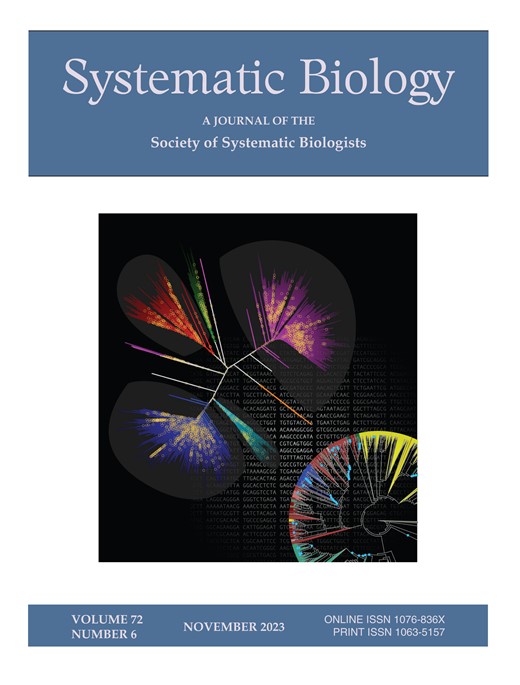A phylogenetic approach to delimitate species in a probabilistic way
IF 5.7
1区 生物学
Q1 EVOLUTIONARY BIOLOGY
引用次数: 0
Abstract
Different species concepts and their associated criteria have been used to delimit species boundaries, such as the absence of gene flow for the biological species concept and the presence of morphological distinction for the morphological species concept. The need for different delimitation criteria largely reflects the fact that species are generated under various speciation mechanisms. A key question is how to make species delimitation consistent in a species group, especially when we want to delimit the species boundaries over many newly discovered evolutionary lineages and add these new lineages into a comparative analysis. Instead of forcing a single definition of ‘species’, we can acknowledge different delimitation criteria by modelling how fast lineages in a species group evolve to meet these criteria along a phylogenetic tree. This study presents such a new model and a new delimitation approach that calculates the probability of each possible species identity of a lineage. We use simulations to show that our likelihood function gives accurate estimates of parameters in the model and our approach have high power to correctly identify species identities. We apply the approach to lineages in two real species groups that already have genomic and morphological evidence for their species identities. Our approach gives consistent inference of species identities with these existing pieces of evidence. We also demonstrate how to use our model to test a popular hypothesis about speciation process across all lineages in a species group and discuss further extension of the model to study speciation.用概率方法划分物种的一种系统发育方法
不同的物种概念及其相关标准被用来划分物种边界,如生物物种概念不存在基因流动,形态物种概念存在形态差异。对不同划分标准的需要在很大程度上反映了物种是在不同物种形成机制下产生的事实。一个关键的问题是如何在一个物种群体中使物种界限保持一致,特别是当我们想要划定许多新发现的进化谱系的物种边界并将这些新谱系添加到比较分析中时。我们不必强迫“物种”的单一定义,而是可以通过模拟一个物种群中的谱系沿着系统发育树进化的速度来满足这些标准,从而承认不同的划分标准。这项研究提出了这样一个新的模型和新的划分方法,计算每个可能的物种身份谱系的概率。我们用模拟表明,我们的似然函数给出了模型中参数的准确估计,我们的方法在正确识别物种身份方面具有很高的能力。我们将这种方法应用于两个真实物种群体的谱系,它们已经有了物种身份的基因组和形态学证据。我们的方法给出了与这些现有证据一致的物种身份推断。我们还演示了如何使用我们的模型来测试一个关于物种群中所有谱系的物种形成过程的流行假设,并讨论了该模型的进一步扩展以研究物种形成。
本文章由计算机程序翻译,如有差异,请以英文原文为准。
求助全文
约1分钟内获得全文
求助全文
来源期刊

Systematic Biology
生物-进化生物学
CiteScore
13.00
自引率
7.70%
发文量
70
审稿时长
6-12 weeks
期刊介绍:
Systematic Biology is the bimonthly journal of the Society of Systematic Biologists. Papers for the journal are original contributions to the theory, principles, and methods of systematics as well as phylogeny, evolution, morphology, biogeography, paleontology, genetics, and the classification of all living things. A Points of View section offers a forum for discussion, while book reviews and announcements of general interest are also featured.
 求助内容:
求助内容: 应助结果提醒方式:
应助结果提醒方式:


